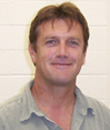
Beckman Scholars Program
» Beckman Mentors
Beckman Scholars must do research in the lab of one of the outstanding faculty members, listed below. The following faculty mentors in the Beckman Scholars Program have been selected based on their dedication and distinguished track record of mentoring undergraduate researchers.

Hagop Atamian
Assistant Professor of Biological Sciences
Research Area: Understanding the molecular mechanisms of plant adaptation to the environment
atamian@chapman.edu
The Atamian Lab uses Genomics, Molecular biology, and Physiological approaches to understand the complex mechanisms that plants evolved to survive in nature. With the global population predicted to reach 9.2 billion by 2050, we need to increase our food production. In one project, we use cutting-edge plant breeding techniques to develop new varieties of chia plants (Salvia hispanica) that produce higher yield. In another project, we study the molecular mechanisms that nitrogen fixing bacteria (called rhizobia) use to establish mutualistic relationship with legume plants and provide the plant with valuable nitrogen macronutrient.

Marco Bisoffi
Associate Professor, Co-Program Director for the Faculty of Chemistry and Biochemistry
Research Area: Prostate / Breast Field Cancerization and Diarylpentanoid Experimental Therapeutics
bisoffi@chapman.edu
Project 1: Cellular and Molecular Mechanisms of Field Cancerization. Field cancerization denotes the fact that tissues adjacent to solid tumors, notably prostate and breast cancers, are histologically normal yet molecularly altered. The Bisoffi lab studies the mechanisms by which these molecular aberrations develop, thereby identifying biomarkers for an improved diagnosis of compromised surgical margins. Project 2: Diarylpentanoid-Based Experimental Therapeutics. De novo synthesized diarylpentanoids of combichemical design are organic small molecules with a variety of molecular targets in cancer cells. They represent chemical scaffolds with a potential for drug and chemical probe development. The Bisoffi lab studies the molecular mechanisms of action in prostate, breast, and pancreatic cancer cells. In both projects, BSP scholars will work in vitro with established human cell models, primary cells, and tissues, thereby utilizing state-of-the-art cell and molecular assays and analytical instrumentation. The goal is to confirm key findings in vivo in pre-clinical animal (mouse) studies.

Douglas Fudge
Associate Professor of Biological Sciences
Research Area: Comparative Animal Biomechanics - Biophysics and biogenesis of hagfish slime
fudge@chapman.edu
The hagfishes are a group of ancient benthic scavengers that occur in deep waters around the world. All 87 species of hagfishes defend themselves from fish predators (including sharks) by secreting large volumes of fibrous slime that clog a predator’s gills and force it to abort its attack. Our current research on hagfish slime is focused on understanding how they make such large volumes of slime (about a liter at a time for a 150 gram animal) in such a short amount of time (less than 400 milliseconds). We are also working on how specialized cells in the slime glands produce the slime threads that reinforce the slime, and which are 1,000 times longer than the cells that make them.

Rebecca Glineburg
Assistant Professor of Biological Sciences
Research Area: Molecular Biology/Cell Biology: Fertility, Oogenesis, Neuronal development, Neurodegeneration
glineburg@chapman.edu
The Glineburg lab investigates how cellular pathways that respond to exogenous stressors like oxidative stress, starvation and increased temperature, contribute to oogenesis, neuronal development, and neurodegeneration. We use Drosophila melanogaster (fruit flies) as a model organism, and investigate these processes by performing ovary and brain dissections, immunofluorescent microscopy, neurodegenerative phenotype testing, and a variety of molecular biology techniques. We are interested in understanding the normal roles of this stress response pathway in both the absence and presence of stress.
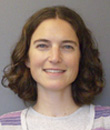
Rosalee Hellberg
Associate Professor of Food Science
Research Area: Molecular Biology/Microbiology - Detection of food contaminants and food fraud using molecular methods
hellberg@chapman.edu
a. The Food Protection Lab is focused on research involving food fraud and food safety. This research program develops and applies rapid methods for the detection of food fraud and food contaminants. Current food fraud projects include the development and application of molecular techniques to identify animal species in food products. Current food safety projects include the development and application of rapid methods to concentrate, detect and differentiate foodborne pathogens, such as norovirus, Salmonella, and Listeria.

Christopher Kim
Professor of Chemistry
Research Area: Environmental Geochemistry - nanoparticle aggregation and reactivity, arsenic contamination in gold mine wastes
cskim@chapman.edu
The Kim Environmental Geochemistry (KEG) Lab studies the chemistry of geological processes that have environmental impacts. Lab members have opportunities for both lab-based experimental work and remote data analysis. Current research projects include: 1) nanoparticle aggregation and metal adsorption/desorption, 2) arsenic contamination in abandoned gold mines throughout California, and 3) arsenic bioaccessibility/bioavailability in mine wastes. Self-learners working independently in a supportive group setting desired!

Jerry LaRue
Associate Professor of Chemistry
Research Area: Heterogeneous catalysis - Reaction dynamics on metallic catalysts
larue@chapman.edu
Metal catalysts are used ubiquitously in society to reduce energy consumption, minimize pollution, synthesize high-value molecules, and increase food production. They accomplish these outcomes by lowering the activation energy barriers for desired reaction pathways, resulting in more efficient and selective chemical reactions. Despite these successes, there is a need to develop better catalysts to combat today’s global challenges, however, we still understand little about the fundamental processes that drive them. The LaRue lab applies a range of spectroscopy techniques to study and control the fundamental processes that occur during chemical reactions on metallic catalytic surfaces. Current projects are focused on developing nanoparticle photocatalysts, understanding the reaction mechanisms of methanol decomposition, and revealing the ultrafast chemical dynamics of “model” reactions, such as CO oxidation.

Patricia Lopes
Assistant Professor of Biological Sciences
Research Area: Disease, Hormones and Behavior
lopes@chapman.edu
Research area 1: Research has shown that in many species, including in humans, the mere risk of infection (such as observing someone who is sick) can already trigger physiological responses in healthy individuals. We are interested in understanding how this phenomenon works. We are studying this topic from the perspective of the brain, immune, endocrine, and behavioral responses. Research area 2: During pregnancy, females experience large physiological transformations that prepare their bodies and their brains to provide maternal care to infants. Since they don't get pregnant, why do male humans show parental behavior? More generally, how do the brains of animal species that do not become pregnant change in order to trigger parental behaviors? We are using an avian model that can be triggered to display parental care after an overnight with chicks, to understand what brain transformations occur as animals became parental, that are independent of pregnancy-induced changes.
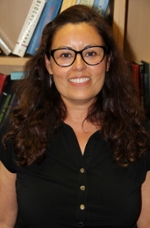
Cecilia Lopez
Assistant Professor of Chemistry
ceclopez@chapman.edu
Dr. Zurita Lopez's laboratory investigates protein arginine methyltransferases (PRMTs), enzymes that post-translationally modify (PTM) proteins by adding a methyl group to arginine residues. In particular, she focuses on PRMTs that share motifs with kinases so that she can identify substrates that are involved in PTM crosstalk. For example, PRMT7 shares a preference for an RXR motif with the kinase Akt whose binding motif is RXRXXS/T. Tentative substrates include histone proteins and PGC-1alpha. Identifying proteins and the sites at which protein arginine methylation affects phosphorylation will contribute to a greater understanding of cellular signaling.

John Miklavcic
Assistant Professor of Food Science
Research Area: Pediatric Nutrition - Role of human milk bioactives in intestinal cell physiology
miklavcic@chapman.edu
Dr. Miklavcic's laboratory looks to identify and characterize bioactives in human milk. They relate acute and chronic health outcomes in infants to the composition of human milk. The functions of milk bioactives in inflammatory signaling are investigated in experimental models. The research program informs policy, public education, food product development, and clinical practice guidelines.

Cedric Owens
Assistant Professor of Chemistry
Research Area: Biochemistry and Biophysics
cpowens@chapman.edu
The Owens Lab is a protein biochemistry and biophysics group that focuses primarily on two research areas, biological nitrogen fixation and enzyme engineering. They use a variety of biochemical tools to study the three-dimensional structure and function of proteins involved in nitrogen fixation. The group's engineering work aims to improve the activity of bacterial esterases for applications in food production.

Lindsay Waldrop
Assistant Professor of Biological Sciences
Research Area: Evolutionary biomechanics of biological fluid-structure interactions, research topics: odor detection by trained dogs, odor capture by animals with chemosensory hair arrays, pumping by embryonic heart tubes
waldrop@chapman.edu
The Waldrop lab focuses on understanding the physical interactions of biological structures with their fluid environments, and how these interactions shape the evolution of structures. Our major projects include: (1) Studying how head morphology of domestic dogs affects success at odor-detection tasks (such as explosives and drug detection). (2) Investigating the effect of sexual signaling strategies have influenced the morphology and arrangement of chemosensory hairs on the antennae of fireflies. (3) Developing a computational model of embryonic vertebrate heart tubes using tunicates as a model system.
Former Beckman Mentors
The following individuals have formerly served as Beckman mentors at Chapman.
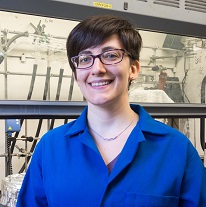
Allegra Liberman-Martin
Assistant Professor of Chemistry
Research Area: Organic Chemistry - Metal-Free Catalysis for Organic and Polymer Synthesis
libermanmartin@chapman.edu
Catalysis is involved in over 80% of industrial chemical production, and many current catalytic processes rely on expensive and rare elements. To create more sustainable chemical processes, the Liberman-Martin group is studying metal-free catalysts as more inexpensive and earth abundant catalyst alternatives. One project in the group involves use of extremely electron-rich carbon(0) compounds as catalysts to promote the addition of H–B bonds across C=O and C=N bonds. We are also investigating silicon and germanium compounds as electron-deficient catalysts for organic synthesis.

Maduka Ogba
Assistant Professor of Chemistry
Research Area: Computational chemistry - Reactivity at Metal-Sulfur Centers
ogba@chapman.edu
Dr. Ogba's research group develops and uses computational techniques to uncover mechanisms and molecular driving forces for chemical reactions of biological and medicinal interest. Their immediate focus is on studying how metal centers influence the reactivity of sulfur-containing compounds. Current projects investigate: (1) selective oxidant-sensing at biological zinc-sulfur sites, (2) factors controlling activation of strong bonds using biomimetic metal-sulfur catalysts, and (3) key interactions that rigidify otherwise flexible calcium salts for sulfur(VI) fluoride activation toward medicinally active sulfonylated compounds. In each case, they are striving to develop generalizable reactivity and selectivity models that may be used for the rational design of novel and more optimal synthetic catalysts.
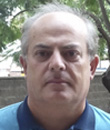
Gennady Verkhivker
Professor of Computational and Data Science
Research Area: Computational Systems Biology and Translational Bioinformatics in Biomedical Research: From Molecular Signatures of Human Disease to Personalized Medicine
verkhivk@chapman.edu
The underlying theme of the Verkhivker Laboratory research program is to advance quantitative understanding of therapeutically important proteins at the molecular and systems-level through the integration of Computational Biology, Systems Pharmacology and Drug Discovery. The laboratory works on (a) development of computational approaches for dissecting evolutionary and molecular signatures of protein kinases, molecular chaperones and viral proteins including SARS-CoV-2 protein targets and their role in human disease; (b) machine learning design and discovery of targeted therapeutics for personalized medicine. Their current projects focus on cross-disciplinary research that combines computational biology and machine learning with chemical genomics and biochemical profiling in dissecting mechanisms of the SARS-CoV-2 viral proteins and development of integrated tools for drug discovery of molecular agents against current and potential future pandemics.
